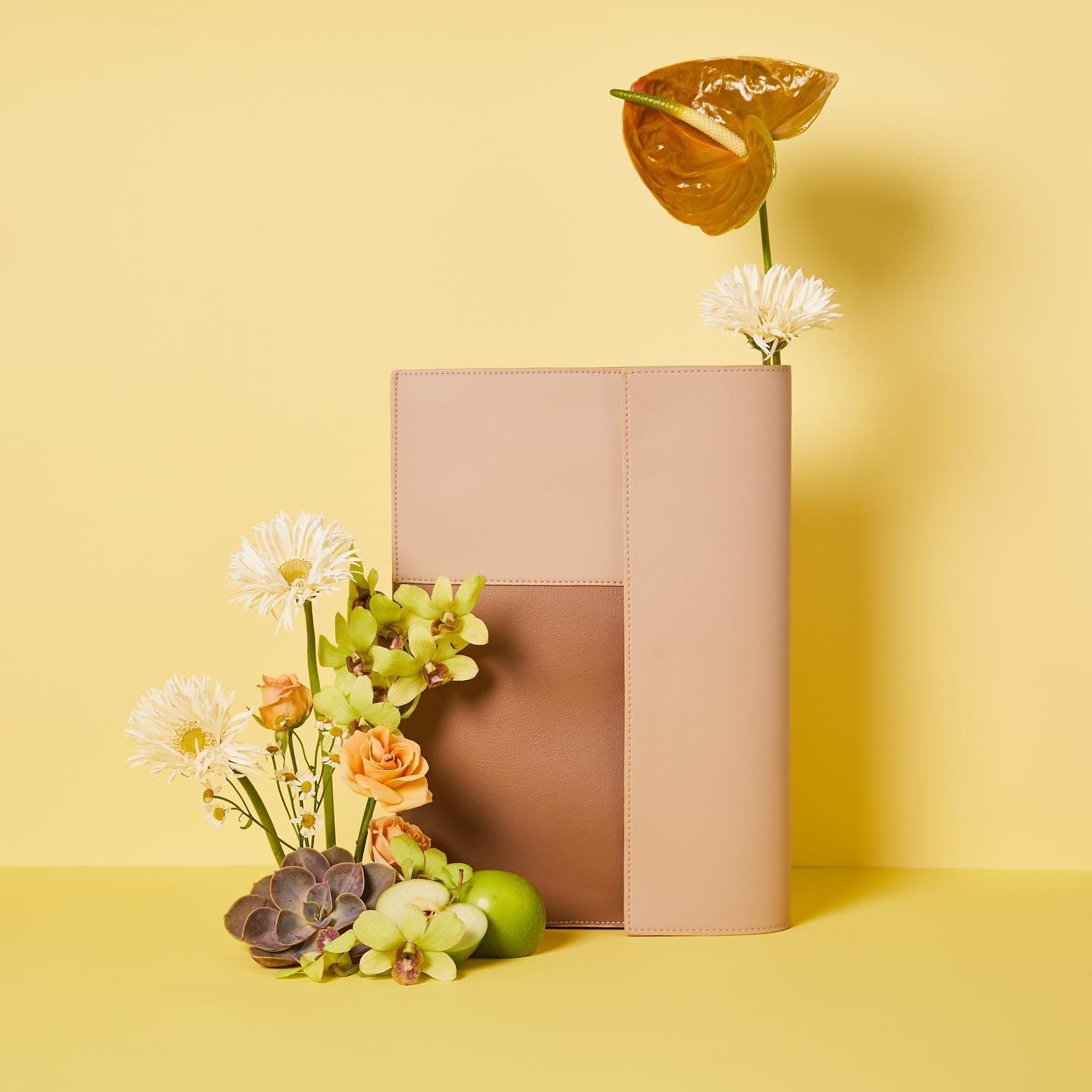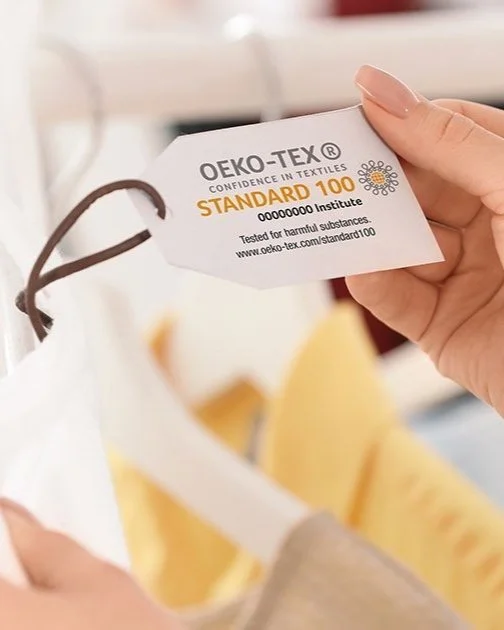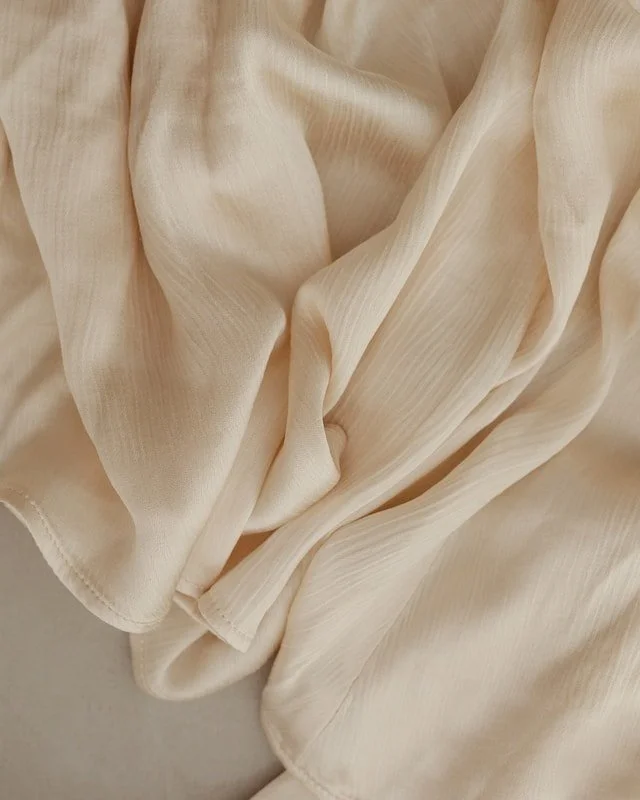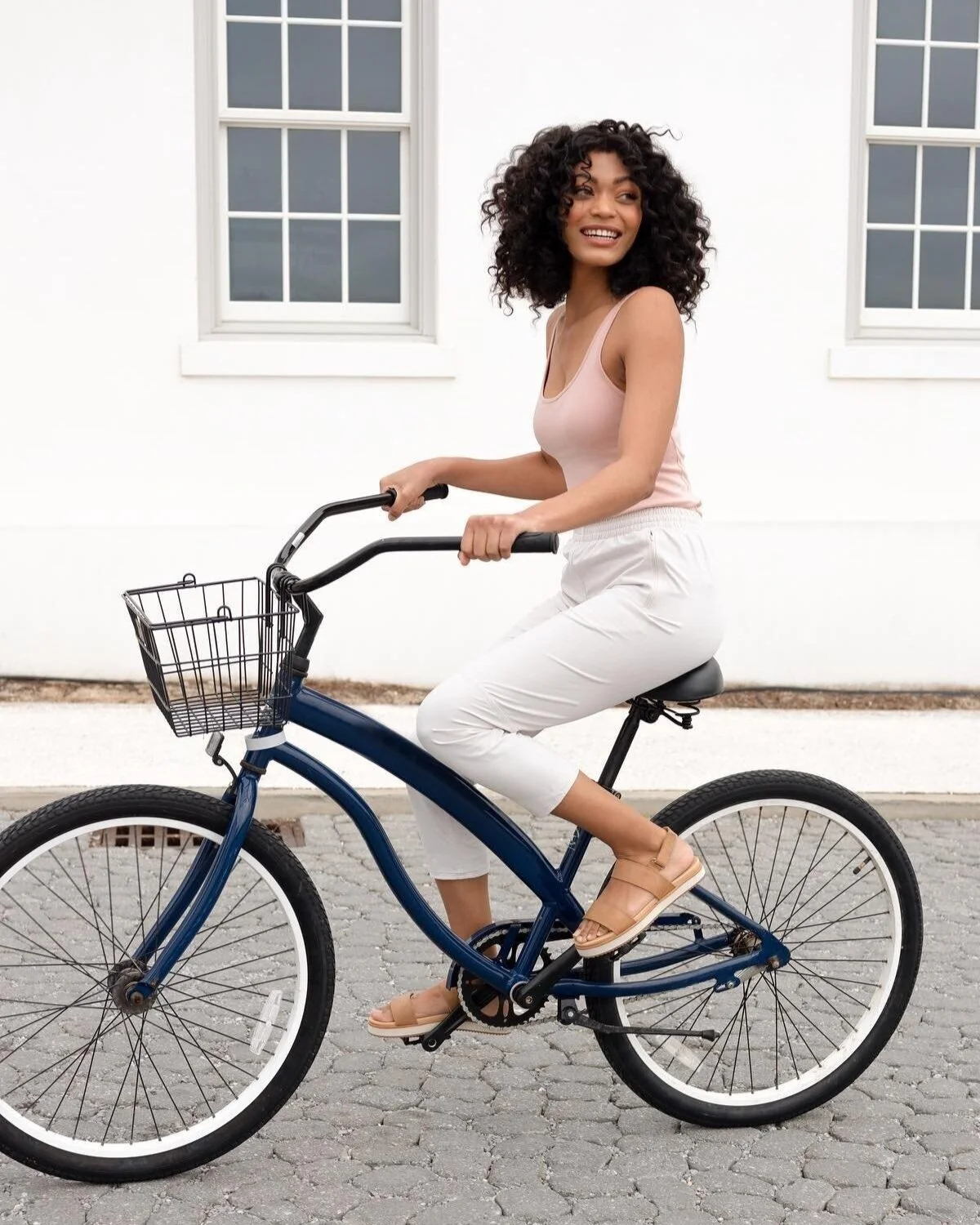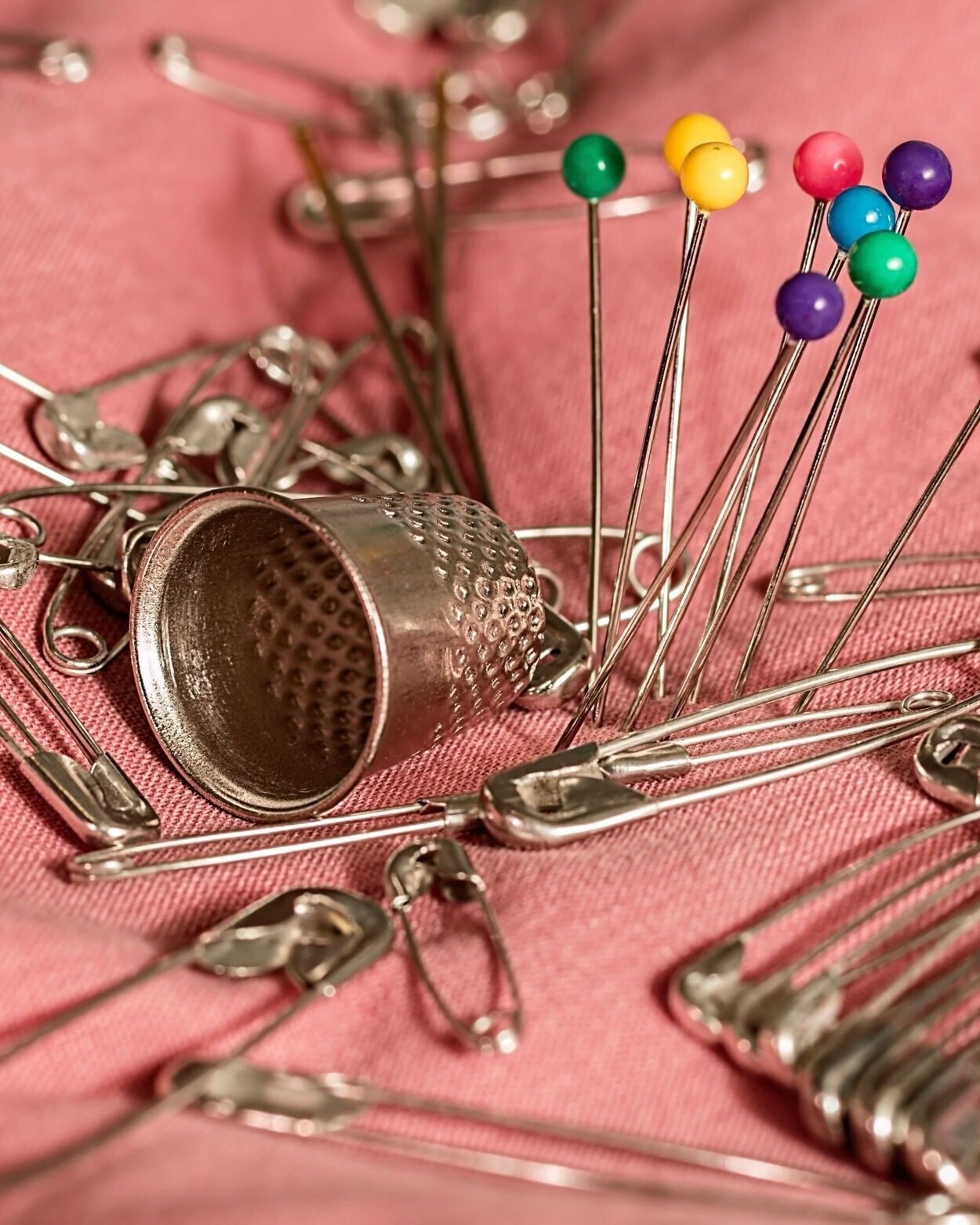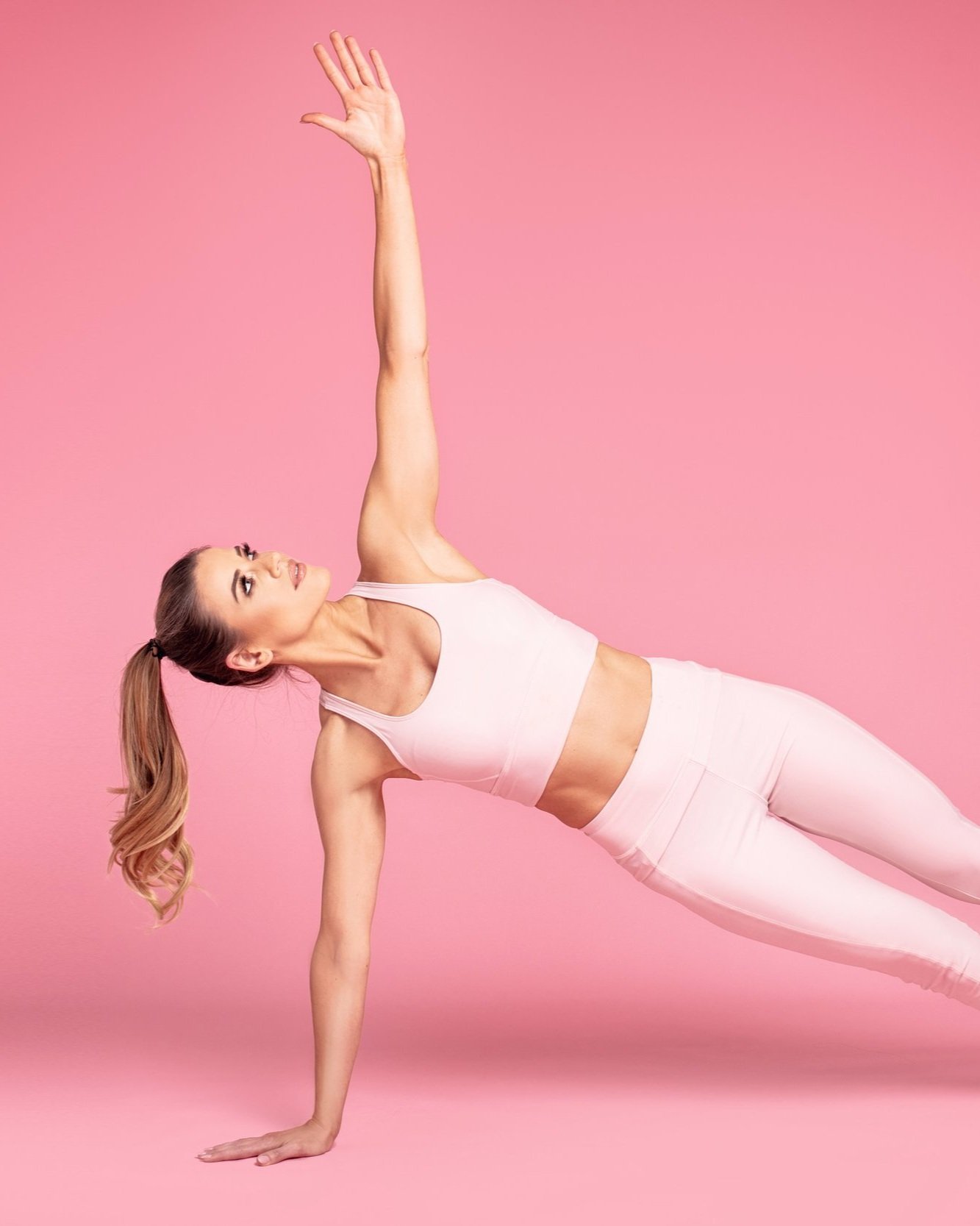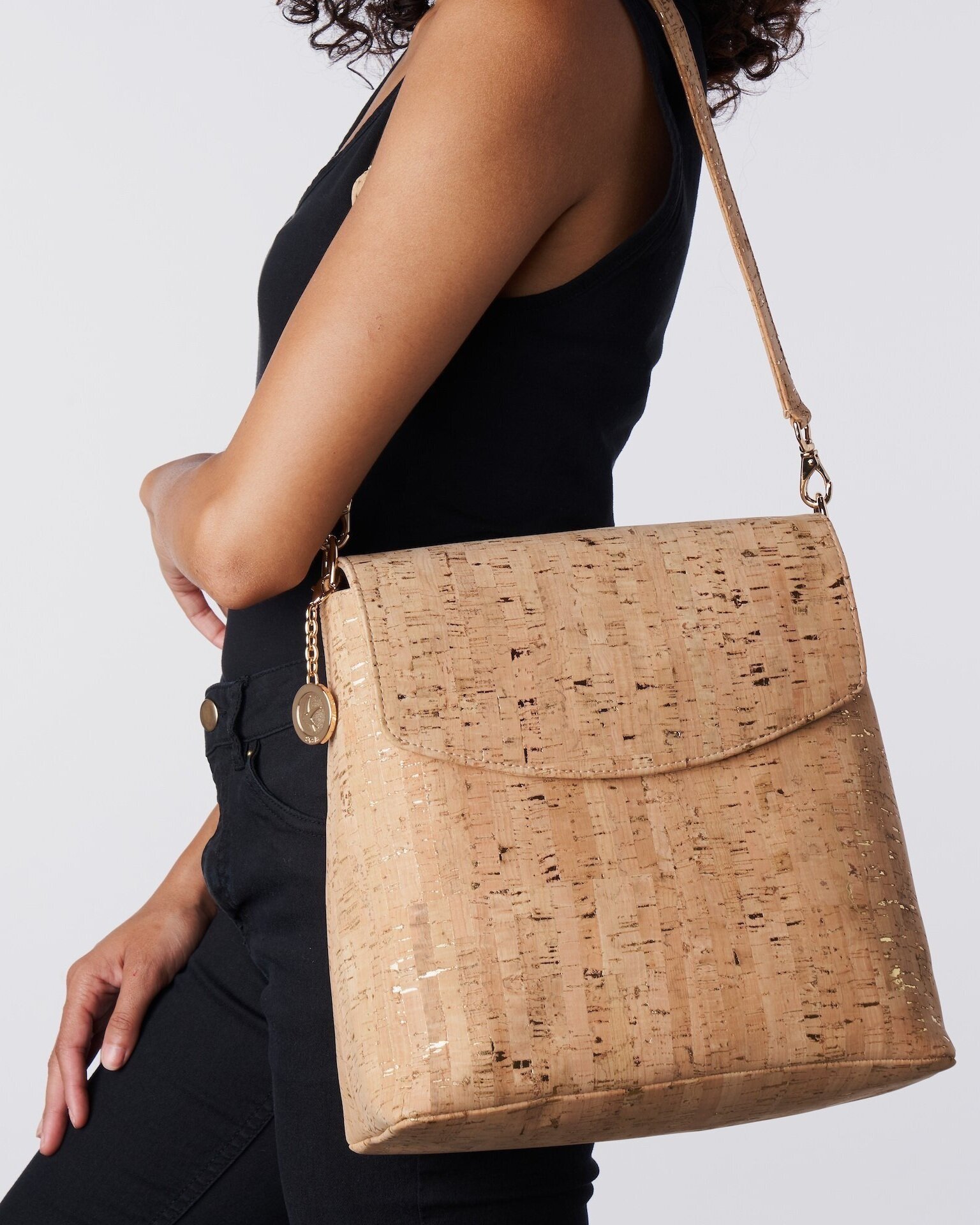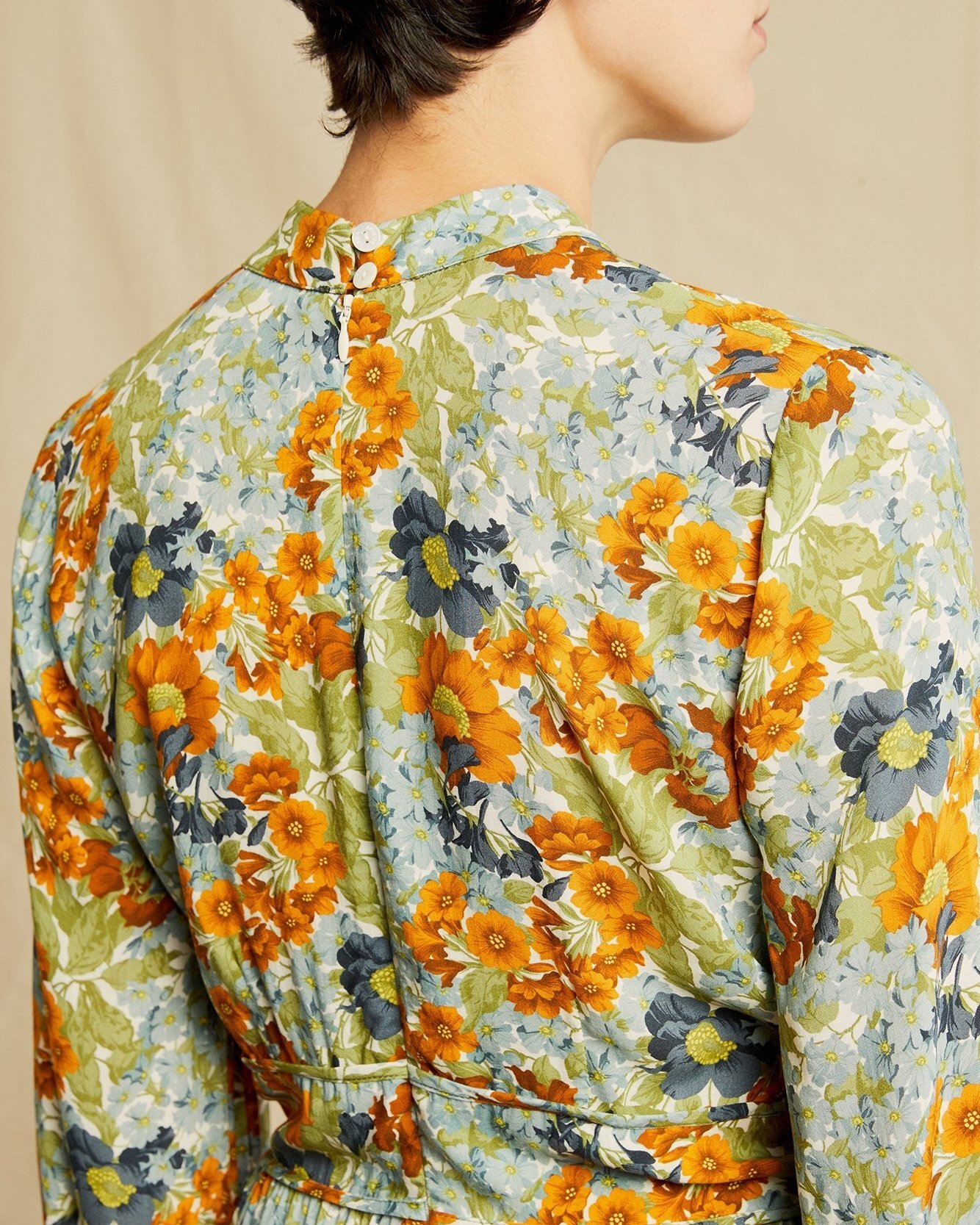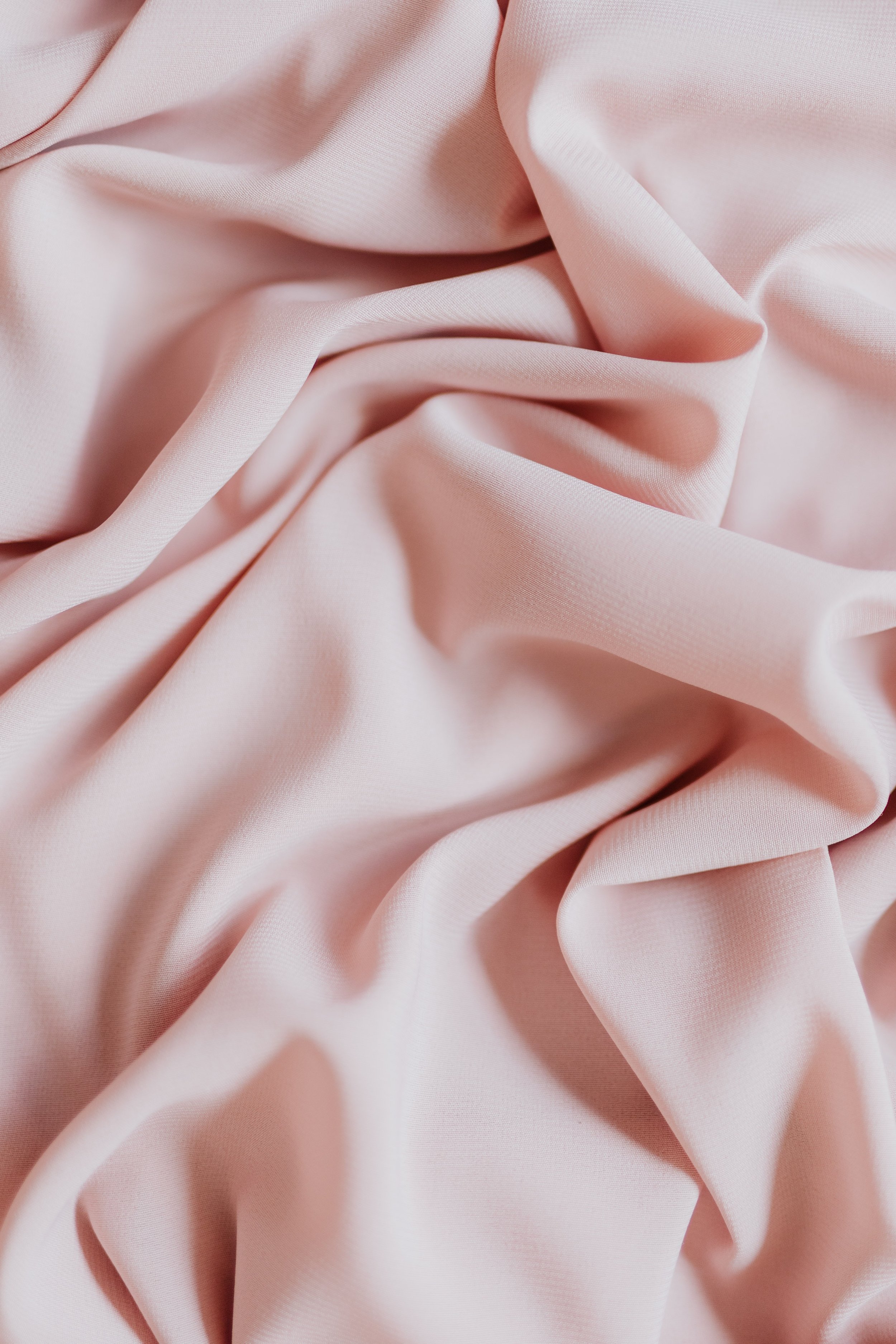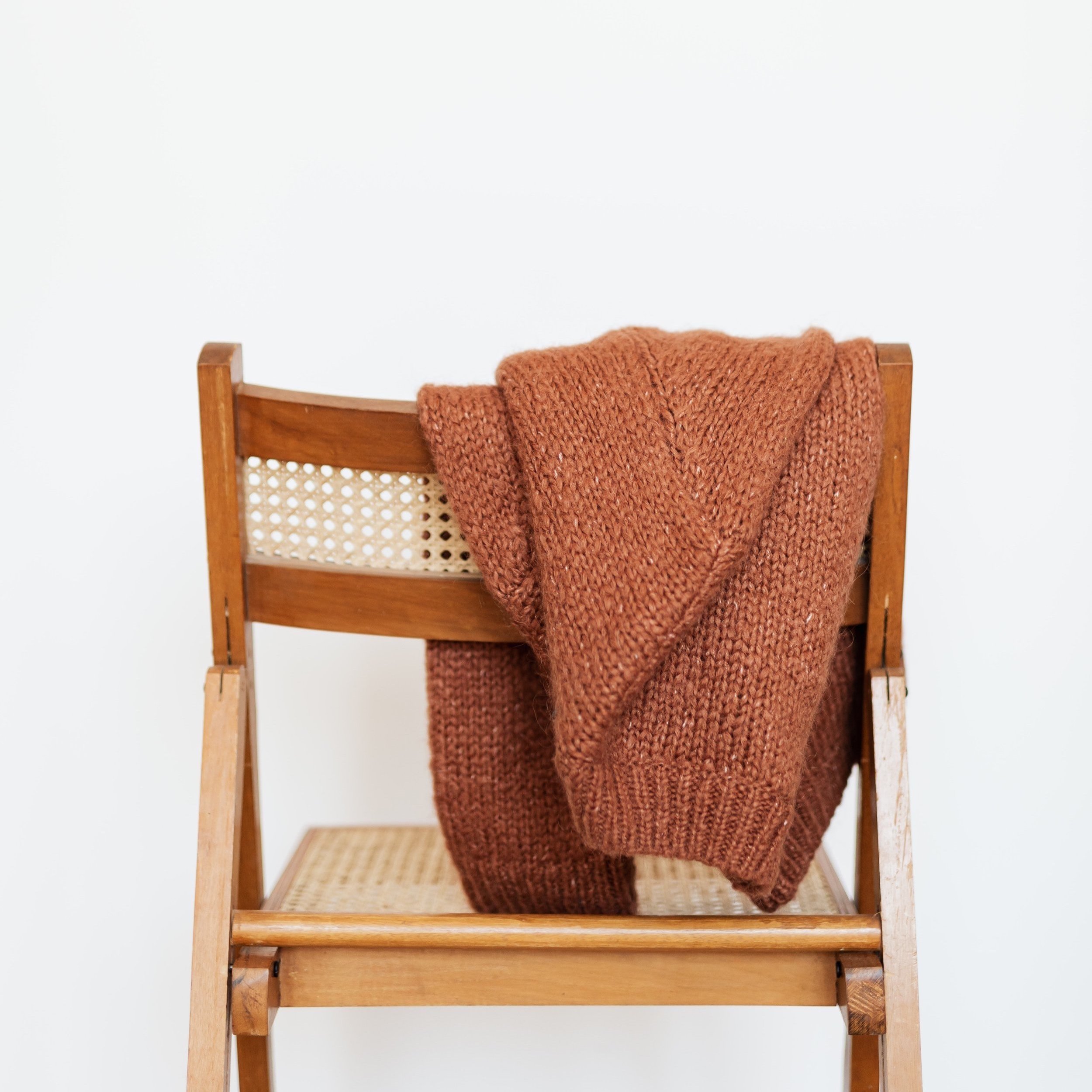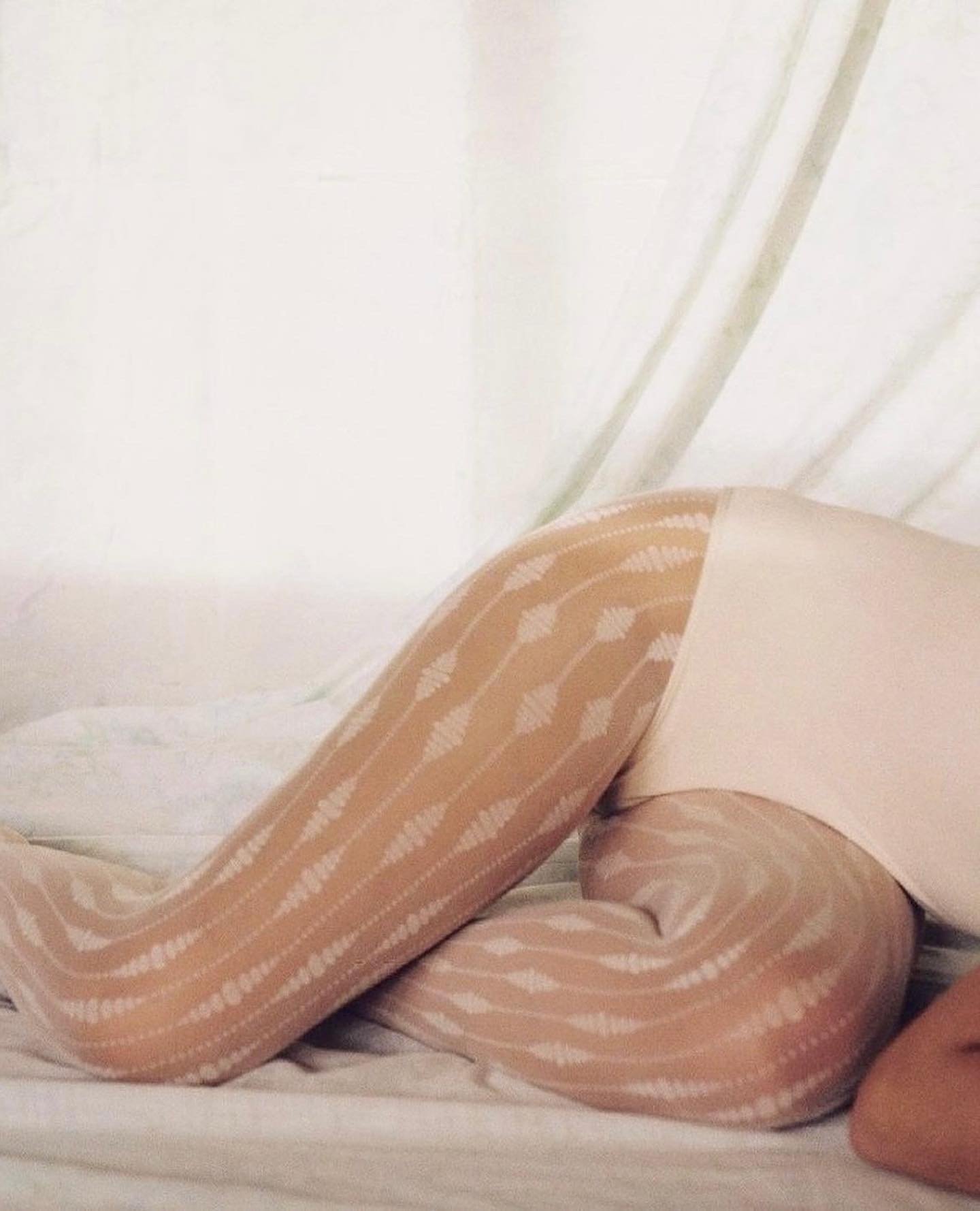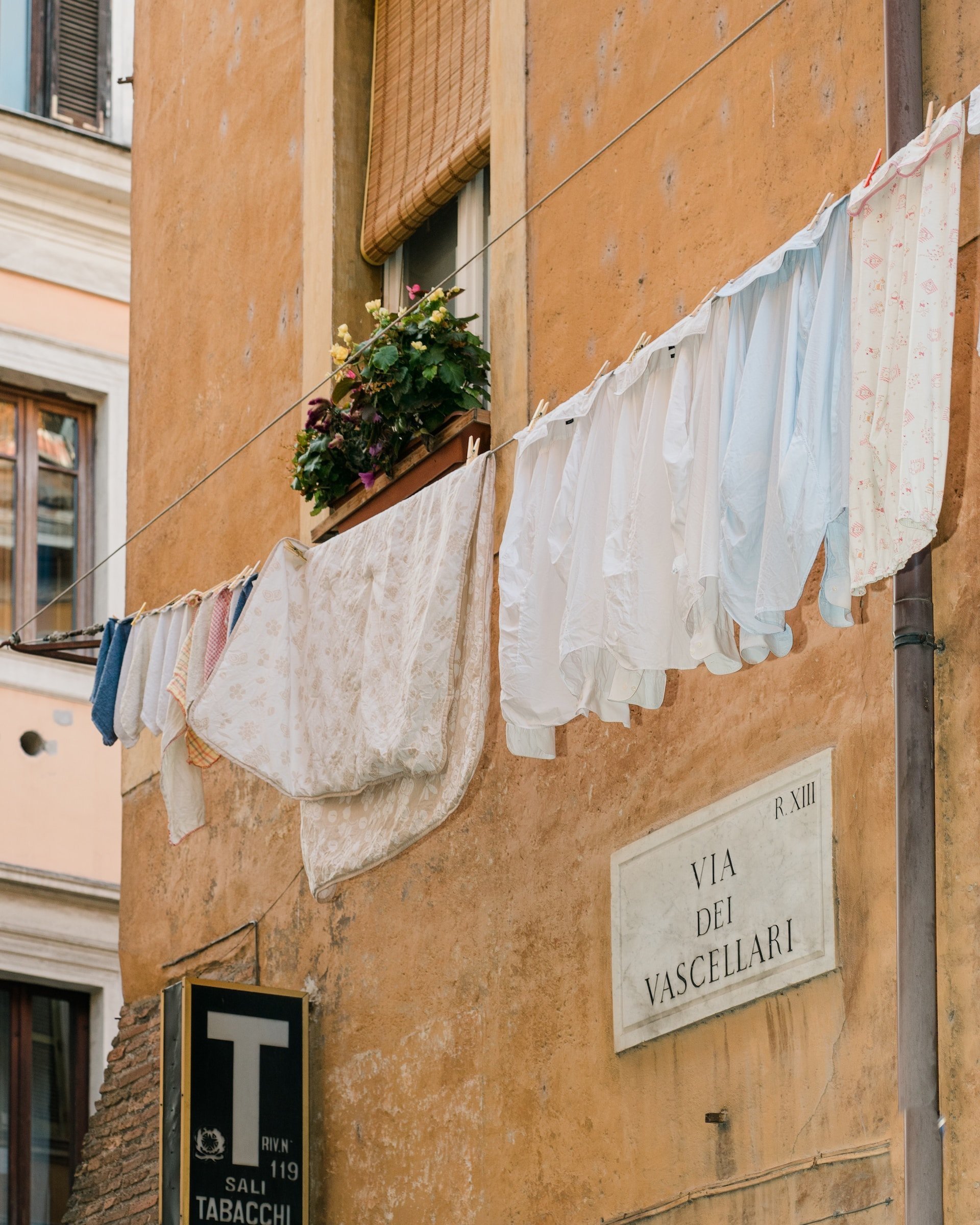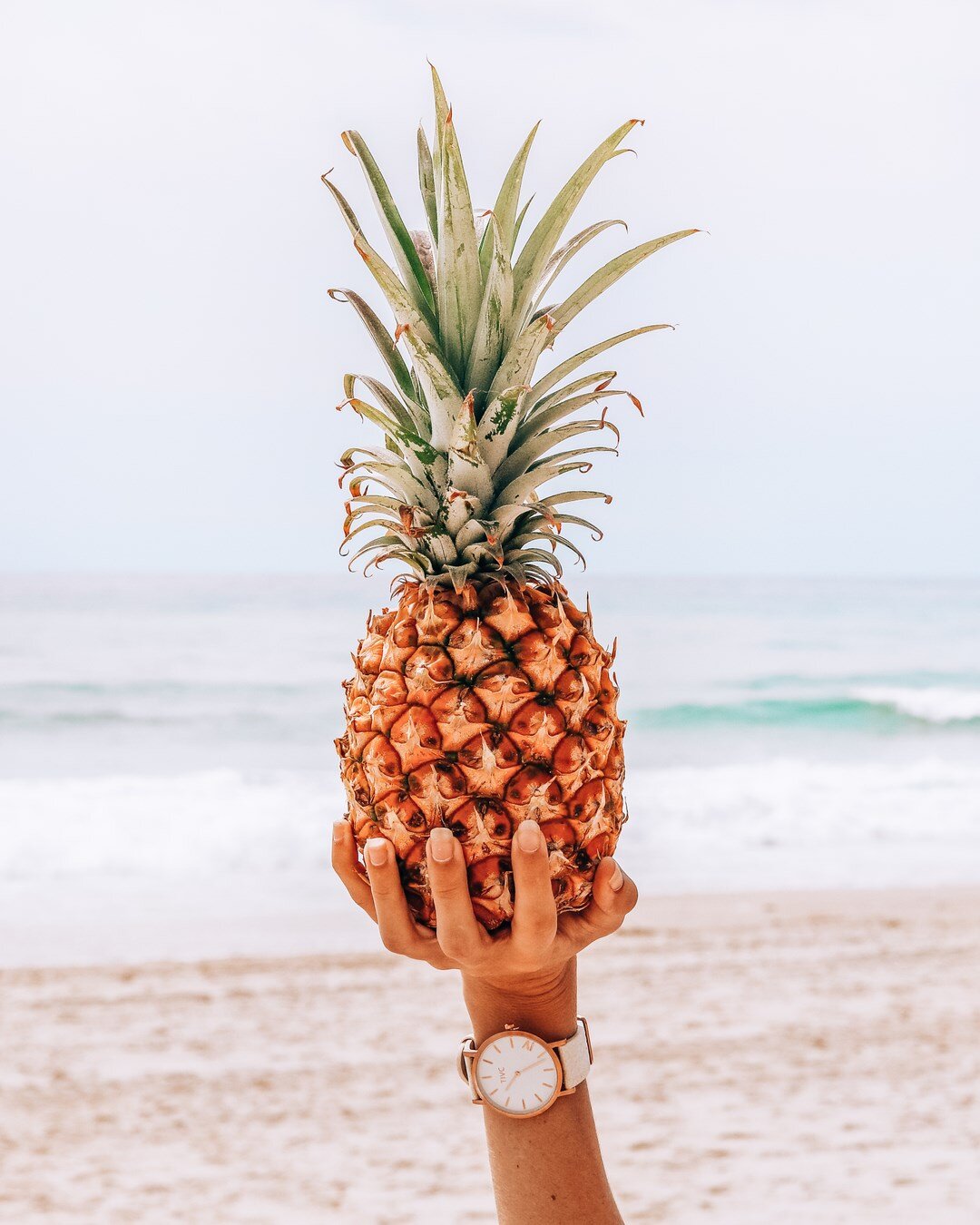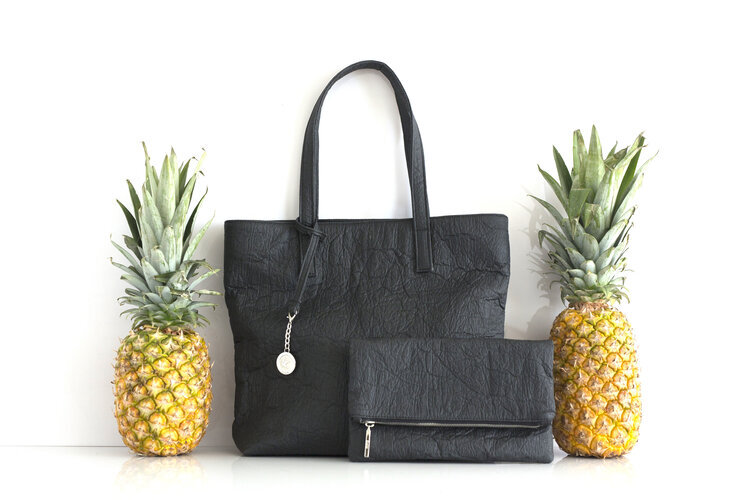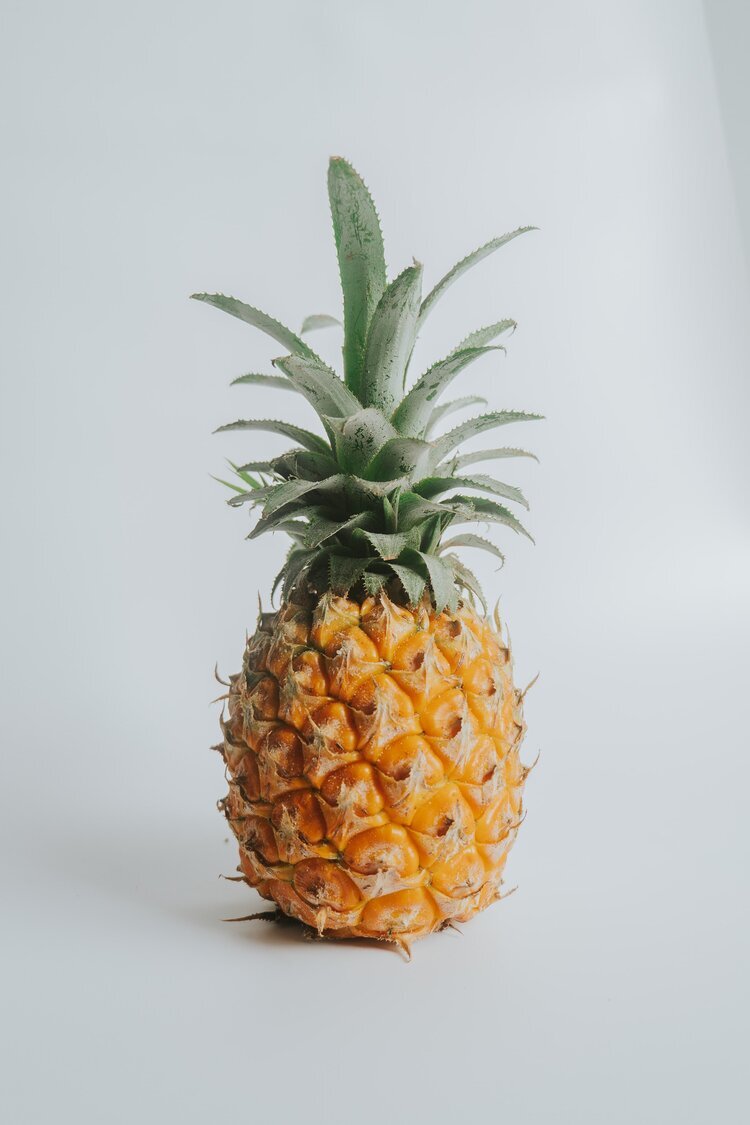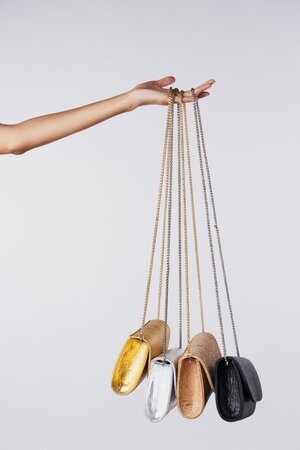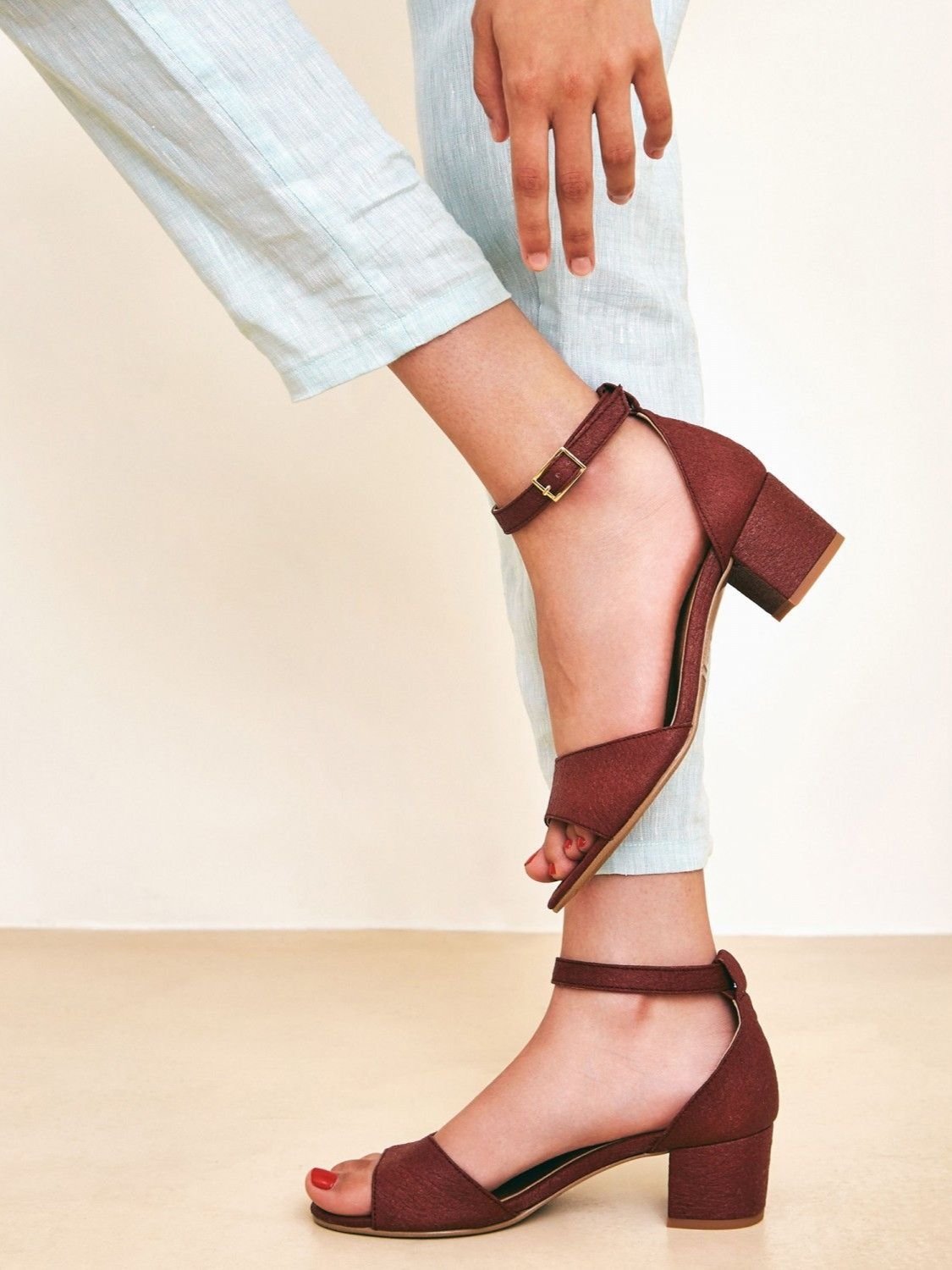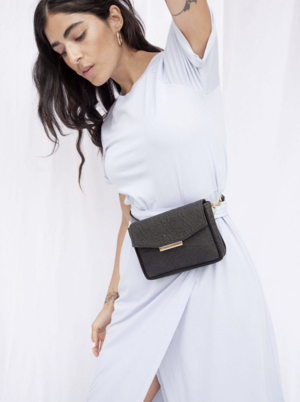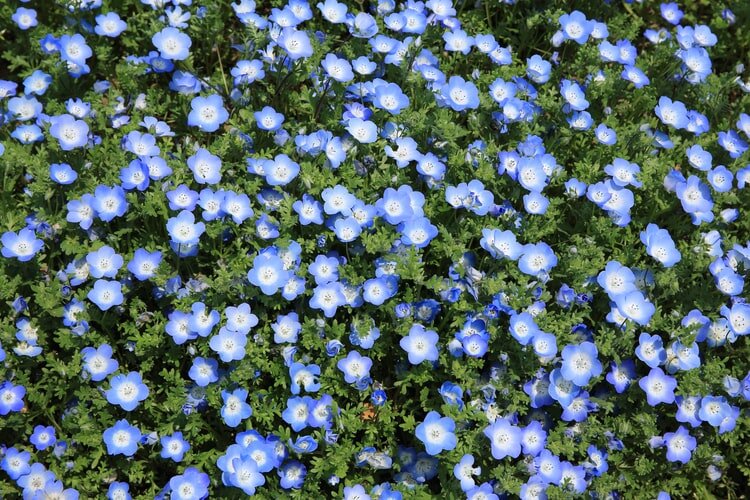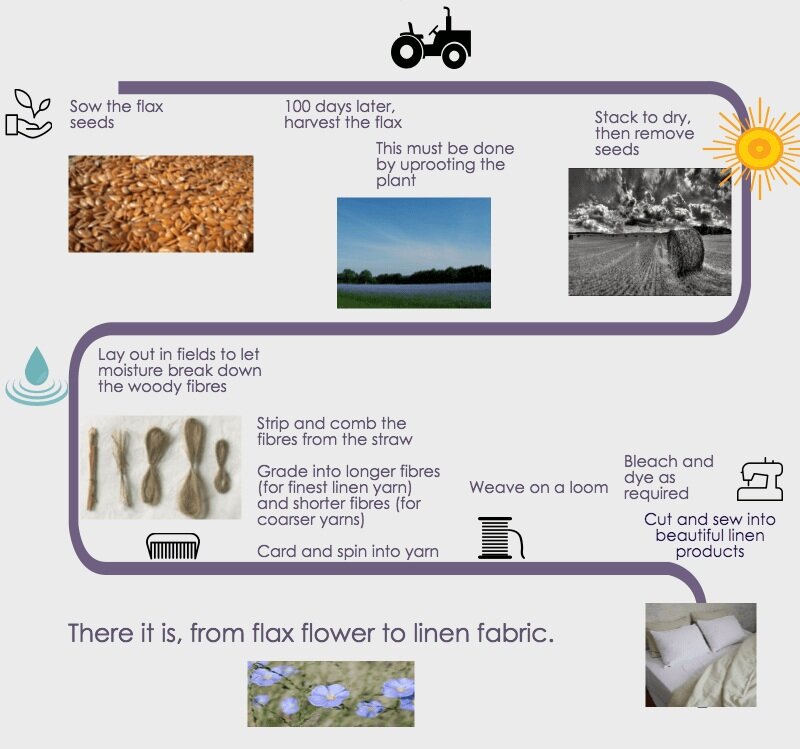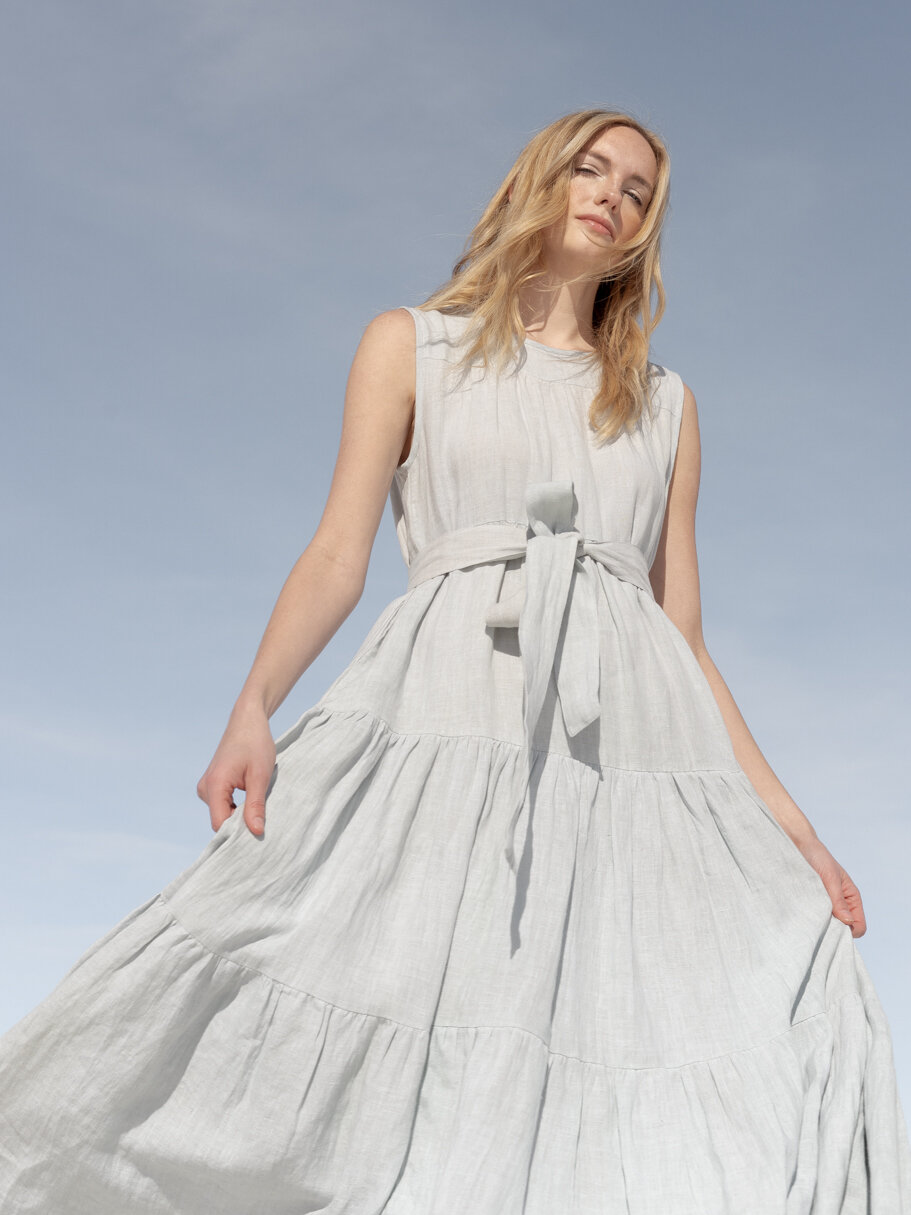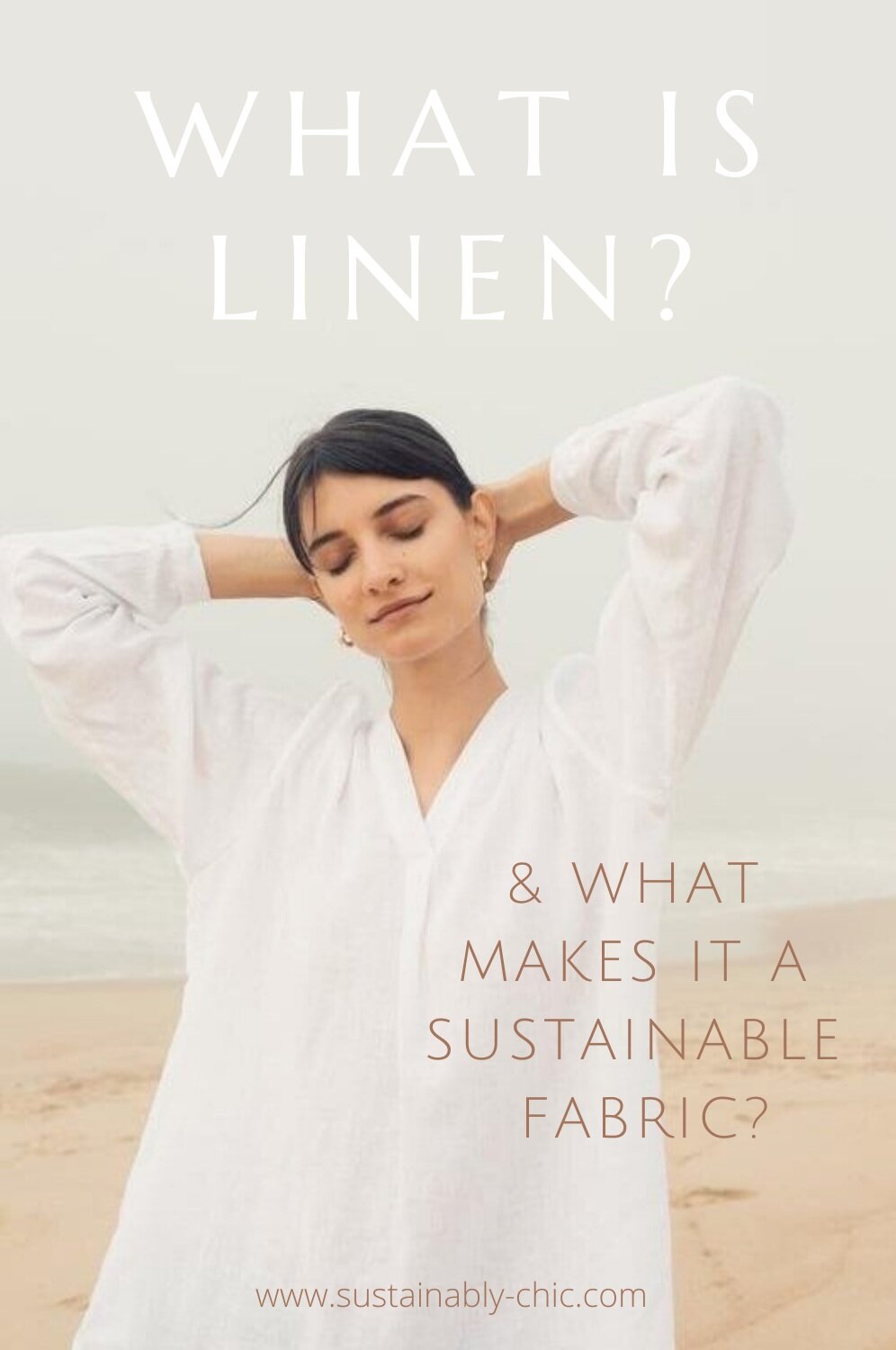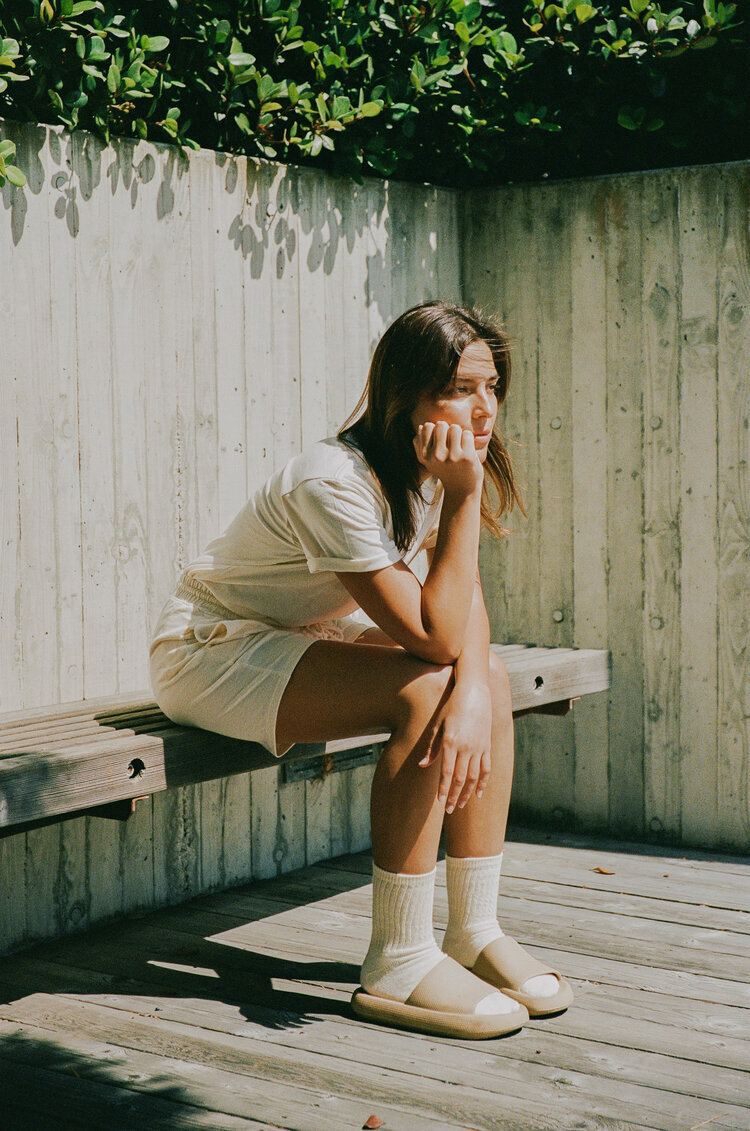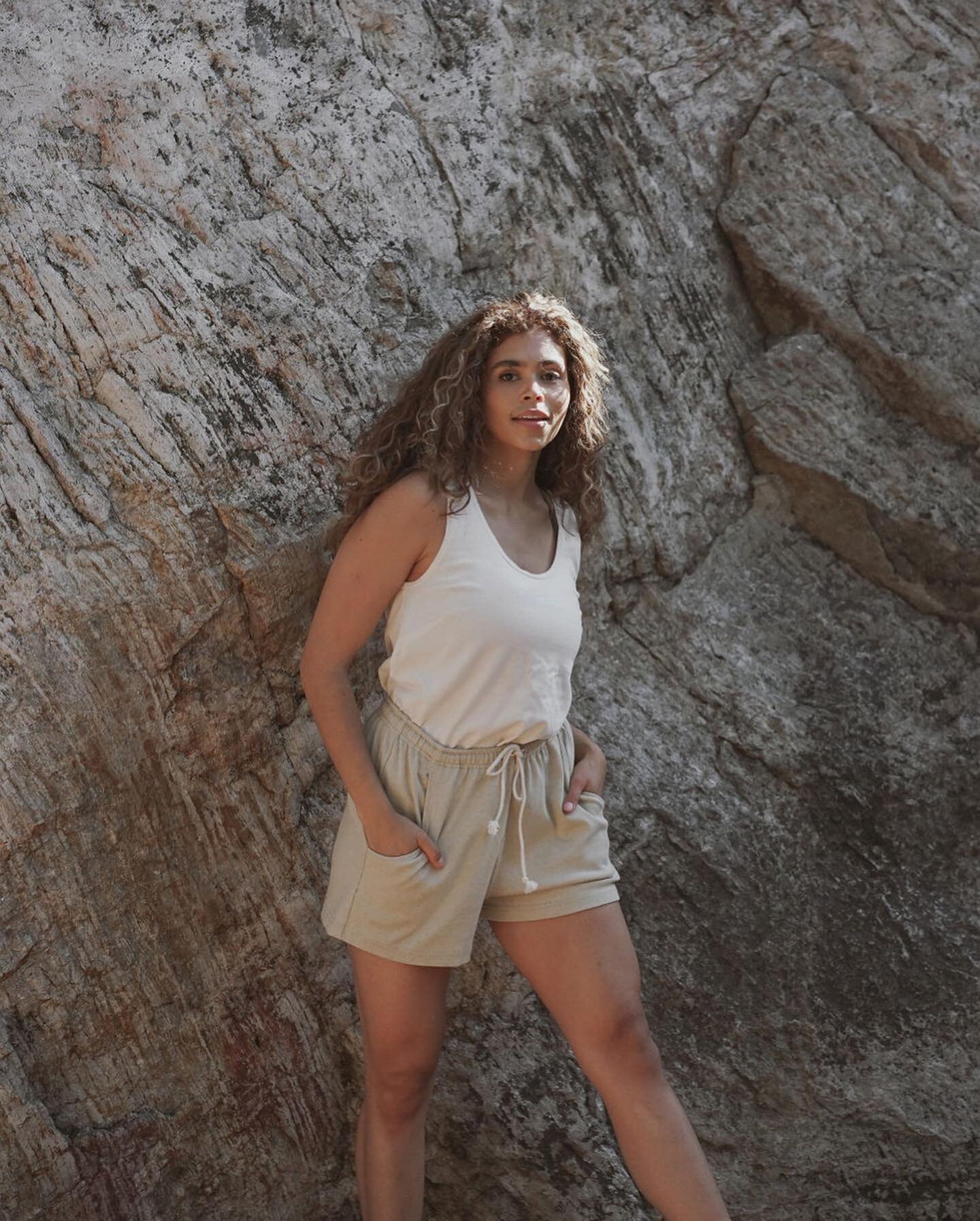image from Allégorie
Disclosure: Some of the links below are affiliated, so we may earn a small commission if you click through and make a purchase. We only add brands & products we truly believe in.
The Coolest Innovative Fabrics in Sustainable Fashion
Whether you are shopping for new clothes online or in a mall, you probably always come across clothing made from the same materials: polyester, cotton, nylon, wool, leather...
If you are looking for eco-friendly alternatives to those, the clothes you may be picking might be made of linen, organic cotton, recycled polyester or hemp.
But how many times did you find a clothing item made from pineapples, cacti or bananas? How about textiles made with mushrooms or algae?
Yes, all of those alternatives do exist! Not only are they very innovative and unique, but they are also great sustainable options!
You might have never come across any of these fabrics yet, but more and more brands have started using them to create eco-friendly products.
In this article, we have compiled a list of 17 innovative fabrics that are making the fashion industry more sustainable. Let’s discover how cool they are!
WHY ARE THESE FABRICS INNOVATIVE AND SUSTAINABLE?
All the fabrics we are mentioning in this article are fascinating discoveries that, in one way or another, are made more sustainably.
Many of them are made using by-products of certain industries, meaning that products that would have been discarded are turned into brand new fabrics. It reduces waste and does not increase the demand for new resources to be extracted from the Earth.
The production process of these innovative fabrics is also generally gentler for the planet. For instance, it may use a lot less water and fewer chemicals than most conventional fabrics. It may release fewer CO2 emissions into the atmosphere.
Some of these fabrics are recycled textiles, and others are artificially made in a lab. Although a few of them are partly produced with synthetic materials, they are overall a lot more sustainable than synthetic textiles.
No matter which one you want to try, you can feel good about buying one of these innovative fabrics!
SUSTAINABLE FABRICS THAT ARE REVOLUTIONIZING THE FASHION INDUSTRY
1) Apple leather
Apple leather is a bio-based material made using apple by-products from the juice industry.
When apples are pressed to create juice, we are left with apple pomace and peels. Those by-products contain a lot of cellulose content, which is great for producing new fabrics!
To do so, apple pomace is reduced to a powder, and once it has been processed, it is combined with a synthetic material, polyurethane. The final result is what we call apple leather.
Apple leather is soft and durable, and has a much lower environmental footprint compared to cowhide leather. It is often used to produce shoes and small accessories like wallets or handbags.
Allégorie, Oliver Co., Veerah and Samara are a few brands using apple leather to design beautiful, sustainable products.
2) Leaf leather
Leaf leather is a plant-based leather alternative made from tree leaves (generally Teak leaves). It is strong and water-resistant, and the leather features the natural design of leaves, making it unique and beautiful.
To produce leaf leather, fallen Teak leaves are collected and no trees are harmed to do so. The leaves are soaked in water, dyed and laid flat together to dry.
The drying process bonds them, which leaves us with a large sheet of leaf material that is then mended with cotton fabric. Before it can be sewn into accessories, a thin BOPP film is applied to make the fabric waterproof and more durable.
Tree Tribe and Jungley both create cool wallets, bags and journals out of leaf leather.
3) Vegea
Vegea, also known as wine leather, is a fabric made from leftover grape skins from winemaking, vegetable oils as well as other natural fibers from the agroindustry.
It is estimated that for every 10 liters of wine produced, 2.5 liters of waste are created. Thankfully, this waste can be upcycled into one square meter of wine leather!
To produce Vegea, the grape marc, which consists of grape skins, stalks and seeds, has first to be dried. After this step, it is combined with vegetable oil and water-based polyurethane. The mix creates a bio-based material that is coated into a fabric. The production process excludes toxic chemicals, dangerous solvents and heavy metals.
4) Mushroom leather
Mylo, or mushroom leather, is a vegan leather alternative developed by the company Bolt Threads and designed to have a minimal environmental impact. It is made from mycelium, which is the branching underground root system of mushrooms.
Bolt Threads uses mycelium cells and makes them grow on beds of organic matter in a vertical farming facility that is 100% powered by renewable energy.
Together, the cells form an interconnected 3D network that is then processed by the company. It is tanned and dyed, transforming it into a leather-like material.
Mylo is soft, supple and durable, which makes it ideal to use in the fashion industry. Sustainable brand Stella McCartney recently launched a bustier top and trousers that are the first-ever garments made from Mylo.
5) Piñatex
Pineapple leather, or Piñatex, is an innovative natural textile made from pineapple leaf fiber, which is an agricultural waste product.
When pineapples are harvested, their leaves are collected and the long fibers are extracted with special machines. After they are washed, the fibers are dried and they go through a purification process to eliminate impurities.
The fluff-like pineapple leaf fiber that is left is mixed with a corn-based polylactic acid and transformed into a non-woven mesh called Piñafelt. Finally, the Piñafelt is colored using GOTS-certified pigments and coated with a resin made from polyurethane to make it even more durable and waterproof.
Piñatex has been used by over 1,000 brands, including Svala and No Saints. The company that manufactures Piñatex, Ananas Anam, is a certified B Corporation.
6) Nettle fiber
Made from nettle plants, nettle fiber was already used by humans during the Bronze Age.
Over the centuries, the use of nettle fibers to make clothes was very popular, but it quickly declined when we started using cotton as an alternative, which was easier and more convenient to grow.
However, clothes made from nettle fibers are more sustainable than those made of cotton, because nettles need less water and pesticides to grow.
Nettle fibers are extracted from the nettle plant stem and are then carded and spun. This process creates a strong cord that can be used to produce ropes and fishing nets, or when blended with cotton or wool, to create clothing.
Pangaia has an entire denim collection made from wild Himalayan nettle!
7) Orange fiber
Did you know that each year, 110 to 120 million tons of citrus waste are generated around the world? An Italian company, Orange Fiber, decided to do something about it and created a sustainable fabric made from orange juice by-products.
To produce orange fiber, the company uses hundreds of thousands of tons of orange waste. It extracts the cellulose from the peels using its patented process and turns it into a fiber that is spun into yarn.
Then, it is woven into a silk-like fabric that is soft and lightweight. It can also be shiny or opaque depending on the final use.
Italian luxury brand Salvatore Ferragamo launched in 2017 a capsule collection of women’s wear made from citrus by-products in collaboration with Orange Fiber.
8) Cactus leather
Cacti are amazing plants! They regenerate the soil naturally, help prevent soil erosion and desertification, and they can absorb carbon dioxide up to 30% of their body mass. But they can also be turned into sustainable fabrics!
Developed in Mexico, cactus leather is made from Opuntia Cactus, also called Nopal. Only the mature leaves of cacti are harvested, meaning that no cacti are harmed in the process. Cacti also need very little water to grow, and there is no need for artificial irrigation or pesticides.
After the leaves are cut, they are mashed and dried for a few days. They are then mixed with non-toxic chemicals, and finally, attached to a backing.
More and more brands are designing products with cactus leather, including Allégorie, Miomojo and KEVA.
9) ECONYL®
Fishing nets have been made from nylon for more than 50 years now, and they are the biggest source of large plastic pollution in the oceans.
Thankfully, the brand Aquafil found a way to upcycle and reuse abandoned fishing nets! It created ECONYL®, a sustainable fabric made of recycled nylon yarn from fishing nets, textile production scraps and other synthetic waste.
Thanks to a regeneration and purification process, the nylon is recycled back to its original purity. It is then processed into yarns and other polymers. The final material, ECONYL®, can be recycled infinitely, without losing its quality.
Producing ECONYL® lowers the global warming impact of nylon by up to 90% compared to making conventional nylon.
Patagonia, Stella McCartney, Girlfriend Collective and Peony all have products made from ECONYL®.
10) Parblex
Parblex is an innovative bioplastic made using potato waste and developed by the company Chip[s] Board.
The company does not disclose much information about its exact production process, but it involves different steps like fermentation, purification, and then polymerization.
Parblex is made from potato peelings, and it is mixed with other agricultural waste, such as wood flour or walnut shells, to strengthen it and give it a certain texture and color.
The material is biodegradable and recyclable, and Chip[s] Board does not use any toxic resins or chemicals derived from oil to produce it. It also reincorporates offcuts back into the production process.
The bioplastic has already been used by the eyewear brand Cubitts London, and to make buttons by Isabel Fletcher.
11) Algae-based textile
Over the past few years, different companies, like Algaeing, have been revolutionizing the fashion industry by developing fabrics and dyes made from algae.
Algaeing works with another company, Algatech, which grows algae using vertical farming, meaning that algae are grown indoors in vertical stacks using solar energy and seawater.
Algaeing is then able to convert algae into a liquid that can be used as a textile dye. By adding cellulose to the liquid, the company is also able to create fibers for the textile industry.
The production process is energy efficient and free of hazardous chemicals. We also need 80% less water to produce algae-based fibers compared to the production of cotton.
A few brands using algae in their products are Hylo Athletics, Dr.Scholl’s Shoes and Pangaia.
12) Mango leather
In the United States, about 20% of mangoes in grocery stores are discarded, not to mention the huge quantities that are wasted before they even arrive on the supermarket shelves.
Thankfully, some brands are taking action to reduce the number of wasted mangoes by turning them into new products. After sourcing discarded mangoes, these companies de-seed and pulp the fruit.
Then, they mix it with a binding agent, water-based polyurethane, and pour the mix into large trays, before screeding the surface to make it smoother.
When it is dry, the material is colored and waterproofed. The whole process is eco-friendly, and it creates a strong leather-like material, mango leather.
Allégorie uses mango leather to create their beautiful products.
13) Lyocell (Tencel)
Lyocell is a type of rayon that has been gaining popularity in recent years as more and more brands have been making clothing from it. There are different kinds of lyocell, the most famous one being Tencel.
Tencel is made from eucalyptus trees sourced from sustainably managed forests. The fibers are harvested, pulped, and mixed with a solvent, before being dried using a process called spinning. The mixture is pushed through small holes to create threads, it is chemically treated and the fibers are then spun into yarn.
Tencel is made in a closed-loop system in which water and solvents are recycled.
If you are looking for clothing made from Tencel, TAMGA Designs, Saint Basics, Amour Vert and Eileen Fisher all have products made with this awesome material!
14) Biofabricated leather
This biofabricated leather created by the company Modern Meadow is one of the most intriguing materials on this list!
Modern Meadow makes its one-of-a-kind lab-grown material from collagen. More specifically, it grows a strain of yeast that produces collagen, which is a protein we can find in the skin.
The collagen is then purified, pressed into sheets and tanned, all without using animal products or toxic chemicals. The final material is very similar to cowhide leather, but it is stronger, thinner, lighter, more versatile and sustainable.
The biofabricated leather made by Modern Meadow is not accessible yet. But thanks to all its beneficial properties, this unique material deserves recognition and its future looks promising.
15) Lotus fabric
Made from the lotus flower, lotus fabric looks like a blend of silk and linen, and it is breathable and wrinkle-resistant, which makes it ideal for clothes and accessories. It is also soft to the touch, stain-resistant and 100% waterproof.
The production process of lotus fabric is inspired by ancient techniques. It is sustainable and very time-consuming since it is done by hand.
Once the stems of the lotus flowers are harvested, workers delicately extract the microfibers from the stems by hand. The fibers are then dried, and they are carefully rolled into a thread that will be used to weave clothing.
You can find beautiful clothes and accessories made from lotus flowers at Jungley and Lotus Paradis.
16) Spinnova fabric
Finnish company Spinnova created a sustainable fiber made from wood, agricultural waste & textile waste, by observing how spiders spin their webs.
The production process of Spinnova fabric uses 99% less water than cotton production, generates minimal emissions, and does not involve toxic chemicals.
To produce this fabric, the company starts by refining cellulose made of FSC-certified wood. The pulp then flows through a nozzle at high pressure, where the fibers rotate and align with the flow. After that, the fibers are dried and collected, before being spun into yarn.
The resulting fabric is 100% biodegradable and recyclable, which means that it is made in a closed-loop system.
The North Face, Bergans and Marimekko partnered with Spinnova to launch their own collections made of Spinnova fabric.
17) Banana fiber
Used since the 13th century, banana fiber is an eco-friendly fabric that has been slowly but surely revolutionizing the fashion industry.
Banana fiber is made from a banana tree’s stems and stalks. The stems are actually a by-product of the banana tree because they are generally discarded when the fruits are harvested, which can only be done once in the tree’s lifetime.
There are different production methods, but the most usual one involves stripping off the sheaths of the banana stem, layer by layer until we are left with only the fibers. Then, the fibers are dried, and finally, they are knotted together using a twisting technique.
If you are looking for clothing made of banana fiber, Milo+Nicki and Valani have everything you need.
About the Author
Eva Astoul is a French freelance writer, specializing in content related to sustainability, simple living, and a growth-focused healthy lifestyle. She runs her own blog, Green With Less, to inspire people to live a more minimalist and sustainable life.
MAKE SURE TO PIN THE PHOTO BELOW TO SAVE THIS POST FOR LATER!
WANT MORE SUSTAINABLE BRANDS? VISIT OUR BRAND DIRECTORY!
Our Brand Directory is home to hundreds of sustainable brands, from makeup to cleaning supplies, from underwear to shoes. We have broken everything down by category for easy shopping, along with discount codes unique to Sustainably Chic viewers.

